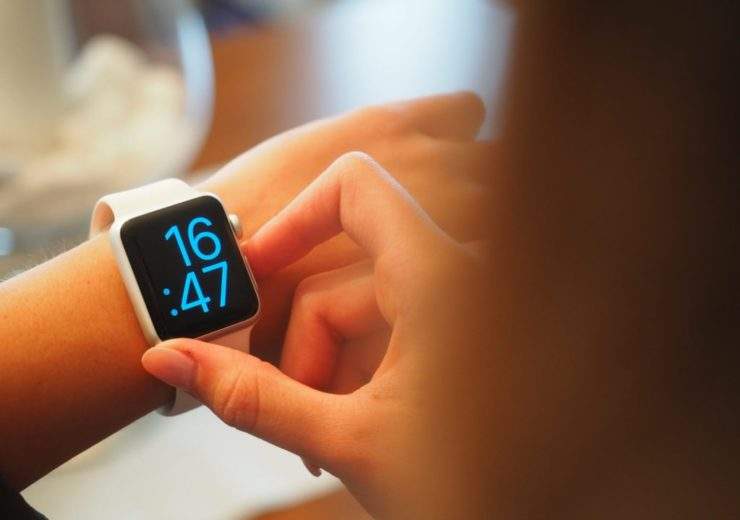Recruiting patients for clinical trials is one of the biggest challenges for pharmaceutical companies, while there is also potential for human error. But connected medical devices could change all that, as Parexel senior director Keith W Wenzel explains

Wearable technology is helping us to keep track of key health data – but connected medical devices are also transforming how data is gathered in clinical trials.
Heart rate monitors, blood pressure sensors and blood glucose meters are some of the tech increasingly being used not only by consumers but the drug development industry industry too.
These connected medical devices may soon provide a catalyst for widespread digital transformation in the industry, believes Keith W Wenzel.
As senior director in corporate IT at American pharmaceuticals giant Parexel, he has a privileged position to observe this trend.
Here, he speaks about why healthcare is undergoing “unpredecented” change and why digitisation is most keenly felt in clinical trials.
How are connected medical devices being used in clinical trials?
Pharmaceutical companies continue to be challenged with rising costs and the need to find novel ways to differentiate the drugs they are developing.
By leveraging remote, connected medical devices, these companies are able to collect both novel and supplemental data to improve the regulatory case, as well as make the case for reimbursement more compelling.
These devices typically leverage a combination of Bluetooth, cellular and Wi-Fi technology to transfer biometric data via a physical hub either plugged into an everyday electric outlet or via a smartphone app.

This may usher in a new era of cost reduction courtesy of fewer site visits and fewer in-clinic procedures.
Through connected wearable and remote at-home technology, patients who aren’t based close to an investigative site can collect and transmit data to the trial sites in near real-time.
This, in turn, lessens the time and geographical burden for patients who no longer must commute to specific trial locations.
Where not affecting the study, blind connected devices also allow patients to view their own medical data first-hand, rather than being given readings from a doctor, which improves overall visibility, patient engagement and study adherence.
In addition, through digital applications, patients can be alerted upcoming remote readings, blood draws and/or site visits.
Given that patient recruitment is a significant challenge for any clinical trial, the ability to recruit patients more easily, effectively, and to create a better experience for patients and site staff while reducing data collection burden, will prove invaluable for any pharmaceutical company wishing to advance the integrity and speed of development of its new treatments.
Benefits of using connected medical devices in clinical trials
Prior to the introduction of connected technology into clinical trials, a medical device, such as a spirometer or activity monitor, would need to be taken back to the site – where the data would either be transcribed into an electronic data capture (EDC) system or downloaded.
Transcription introduces human error during data entry.
Downloading creates an unnecessary data management burden for the site and the clinical research associated (CRA) to ensure that all the data was downloaded and properly transferred to the clinical data management system.
The growing sophistication of wearable technology eliminates those burdens and represents a huge industry change.
Connected medical devices can now securely and wirelessly transfer data, lowering the burden on both patients and sites, and increasing the integrity of the data in a way that was never previously possible.

For instance, once a reading is taken on a blood pressure monitor, that data is automatically downloaded to a hub, which the study subject plugs in once at home and takes his or her readings on the prescribed schedule.
All the data transfer is handled seamlessly and securely without the need for little or no manual intervention.
If the patient forgets to plug in the hub, the data is stored on the medical device until it’s plugged in.
An alternative, but still secure, data transfer mechanism is via a companion app on a smartphone.
Analysing data from connected medical devices in clinical trials
The evolution of analytics when applied to remote medical devices offers two huge benefits.
First, it gives clinical trial sponsors the ability to alert researchers to safety events in near real-time and holds the promise of alerting medical staff of future safety events before they occur.
Second, predictive analytics can also be used to identify devices that have low battery, or are failing, so they can be charged or replaced before failure occurs and data is unable to be collected.
This technology will allow remote and in-clinic data to be “fused” together for sites and study teams to view side-by-side in phase one to four clinical trials – thus providing a more holistic view of a study subject’s adverse events and health status.
As analytics advance in the future, this technology may also allow for fraud detection by identifying when a different person is using the device instead of the study subject.
It could detect study drop-out prediction, by identifying when a subject is becoming disengaged with the study and likely to drop out so pre-emptive action can be taken.
Connected medical devices could make clinical trials more successful than ever
As remote technology and sensors in the pharmaceutical industry become increasingly prevalent, contract research organisations and sponsors must become skilled at transferring and storing large volumes of time series data gathered from wearables devices.
Increasingly, clinical trial sponsors are conducting proof-of-concept studies and then leveraging connected medical devices in fully-fledged trials to collect novel and supplemental data in near real time.
If remote medical device data is collected and analysed effectively, study sites and teams will have access to more data than ever before and there will be an opportunity for clinical trials to be conducted more cost- and time-effectively – and more successfully than ever before.


